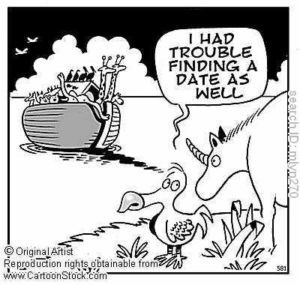 Some discount the Bible to be untrue and filled with fairy tales, because it makes references to animals such as dragons and unicorns. Yes, you read right. The Bible does mention the “unicorn” amongst other animals and birds that live today such as the goats, donkeys, peacocks, ostriches, horses, etc. Job 39:9 makes a specific reference to the unicorn as an illustration of strength, in order to exemplify God’s greatness.
Some discount the Bible to be untrue and filled with fairy tales, because it makes references to animals such as dragons and unicorns. Yes, you read right. The Bible does mention the “unicorn” amongst other animals and birds that live today such as the goats, donkeys, peacocks, ostriches, horses, etc. Job 39:9 makes a specific reference to the unicorn as an illustration of strength, in order to exemplify God’s greatness.
However, to the human mind, it seems far-fetched to imagine an unicorn since none of us have seen a horse with a horn on its forehead (which is what unicorn pictures illustrate). But the question, I have to pose is, has anyone seen a living Tyrannosaurus Rex (T-Rex) in real life? We still know that the T-Rex did exist. So it is not unlikely that the unicorn existed, as did the T-Rex. In fact, archaeological evidence indicate that the fossils of the elasmotherium, which was a horned creature with equine (horse-like) features, were that of an unicorn. Or the unicorn reference may have been to that of a modern day, Rhinoceros*. Look at Rhinoceros or the Narwhal today and reflect on God’s greatness and creativity in creating such strong and powerful, yet diverse creatures and praise him that of all his creations, He chose you and me, to be his most priceless of all creation.
No matter what, we must not be distracted, trying to determine the verity of the existence of the unicorn, but instead from the unicorn, we can learn that
1. God is not illogical
2. God’s word is infallible
3. We are God’s most priceless creation.
*A margin note on Isaiah 34:7 placed in the King James Version in 1769 mentions this possible identity, and the Latin Vulgate translates the same Hebrew word as “unicorn” in some contexts and “rhinoceros” in others.
Job 39:9 (KJV)
9 Will the unicorn be willing to serve thee, or abide by thy crib?


Leave a Reply